
The field of engineering has contributed immensely towards progress in the way the world works. The innovation and inventions of the past few decades are nothing short of amazing. It’s hard to imagine our lives without engineering marvels like dams, canals, and skyscrapers, to name just a few.
However, being a civil engineer also holds an incredible amount of responsibility. Over the years, design failures, such as under or over-estimations, acting on insufficient knowledge, and others have led to horrific accidents, claiming the lives of many. Nevertheless, these disasters are also an opportunity to learn from our mistakes so as to not repeat them in the future.
We have rounded up 10 of the worst engineering accidents to happen in the last few decades (of course the list is far from being exhaustive).
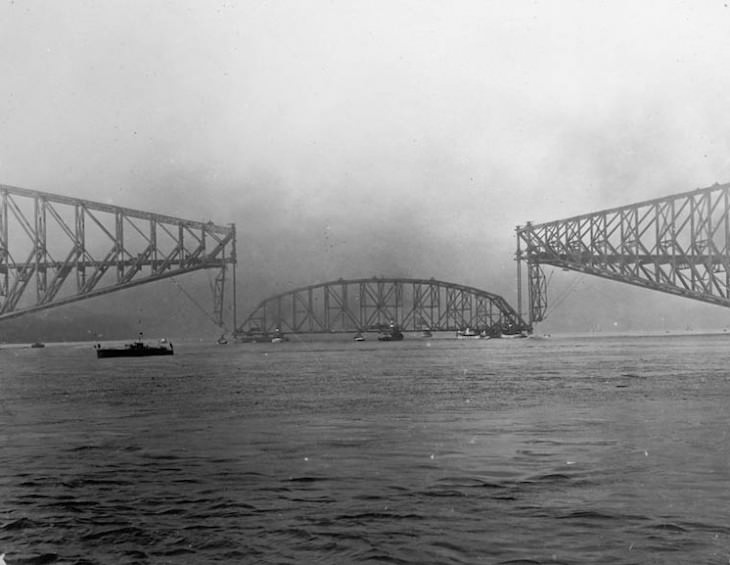
Image Source: Wikipedia Commons
Spanning the St. Lawrence River near Quebec City, the massive Quebec Bridge has a history of tragedy. At the time, it was the largest cantilever structure attempted. Unfortunately, the bridge which was supposed to be an engineering triumph collapsed twice, first in 1907 and then in 1916.
The first sudden collapse happened during construction, in August 1907. In just 15 seconds, the south anchor arm, the cantilever arm, and the partially completed suspended span fell 150 feet (45 m) into the St. Lawrence River. 75 of the 86 workers on site were killed, and the remaining 11 suffered injuries.
Despite the disaster, the Canadian government decided that the project must be completed in order to establish the rail link for the railway system. Construction began again in 1913, and by 1916, the bridge was nearly completed. On the morning of September 11, the workmen faced a difficult task in moving the span upstream, and all went well with that part of the job.
However, around midday, something went terribly wrong. One corner of the span tore away and sagged. A few seconds later, the other ends pulled off their supports and the whole span came loose and disappeared into the river. 13 men lost their lives, and several others were injured.
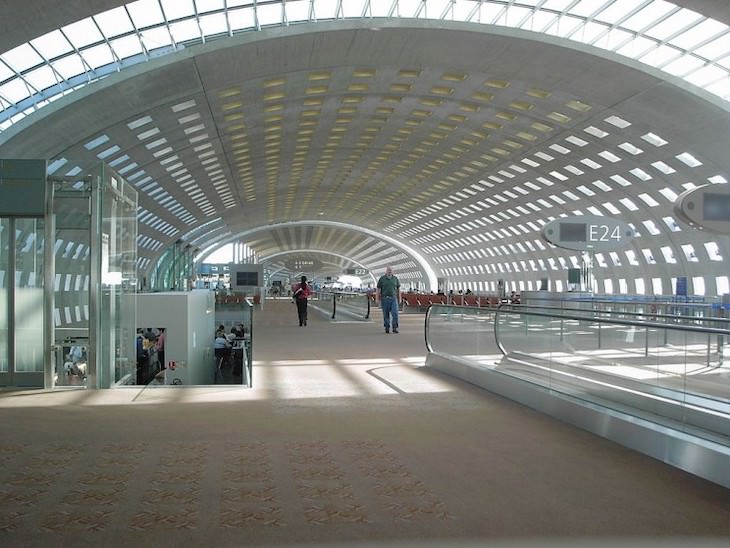
Image Source: Wikipedia Commons
Not long after the inauguration of the Charles de Gaulle airport, in May 2004, a big portion of the roof of Terminal 2E collapsed, killing 5 people and injuring many more. The terminal building was a 1475 ft (450 m) long elliptical tube constructed of concrete rings. According to the official investigation report, a number of design failures were not caught during construction, which resulted in the collapse, namely a lack of redundant supports, poorly placed reinforcing steel, weak outer steel struts, weak concrete support beams, and low resistance to temperature fluctuations.
The structure was rebuilt with a metal framework and reopened in the spring of 2008.
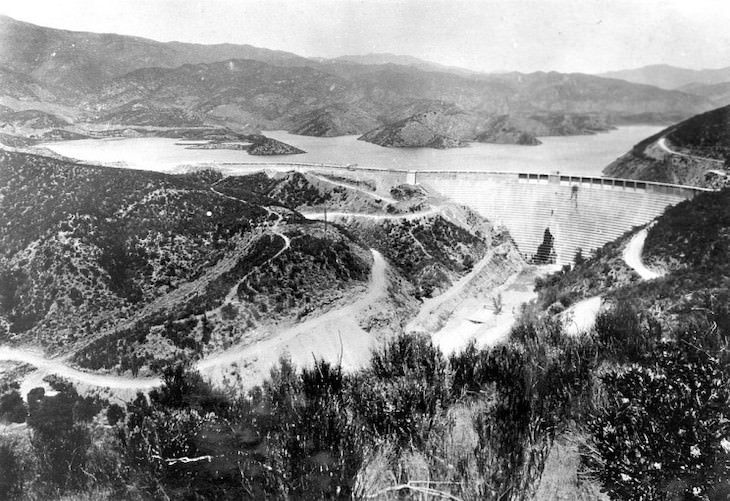
Image Source: Wikimedia Commons
The St. Francis dam failure is considered one of the worst civil engineering catastrophes in American history. Built between 1924 and 1926, St. Francis Dam was a curved concrete gravity dam that was meant to help meet Los Angeles’ growing need for water regulation and storage. It was located about 30 miles (50 km) northwest of downtown Los Angeles. Several cracks and leaks were observed in the dam and its abutments but they were dismissed as normal by the Los Angeles Department of Water and Power and the general manager and chief engineer of the dam, William Mulholland.
On March 7, 1928, the reservoir was filled to capacity for the first time. After an inspection, Mulholland proclaimed it safe. Five days later, on March 12, the dam catastrophically failed. The resulting flood killed hundreds and swept away thousands of acres of fertile land. The disaster was largely blamed on poor design and the use of poor quality concrete, which allowed water to undermine the dam's foundations. It goes without saying that it also marked the end of Mulholland’s career.
Related: These Feats of Engineering Will Leave You Speechless
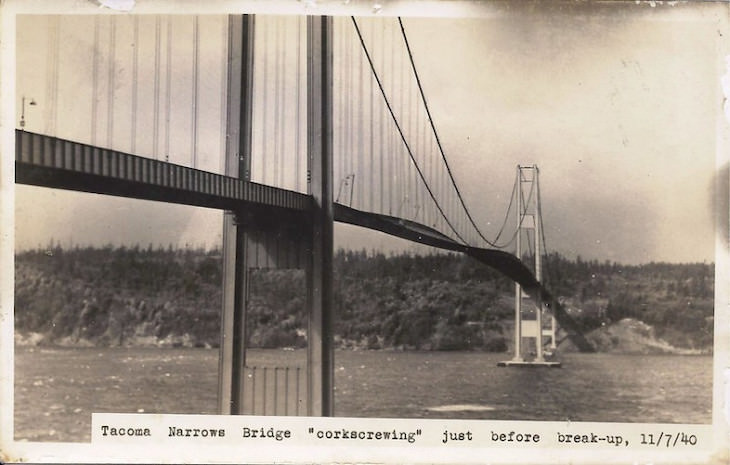
Image Source: Flickr
The Tacoma Narrow Bridge in Washington was a suspension bridge, spanning the Puget Sound between Tacoma and the Kitsap Penninsula. Sleek and slender, it was the third-longest suspension bridge in the world at the time, spanning over 5,959 feet.
It was clear during construction that the deck moved vertically in windy conditions, so much so that construction workers nicknamed the bridge Galloping Gertie. Nevertheless, the bridge was opened to the public on July 1, 1940.
On November 1 that same year, high winds caused the bridge to sway considerably. At about 11 AM, the bridge's main span finally collapsed in the 40 mph (64 km/h) winds. The deck oscillated in an alternating twisting motion that gradually increased in amplitude until the deck tore apart. Fortunately, there were few people on the bridge at the time, and the only casualty was a dog named Tubby.
Related: 15 Amazing Current Megaprojects That Will Change The World
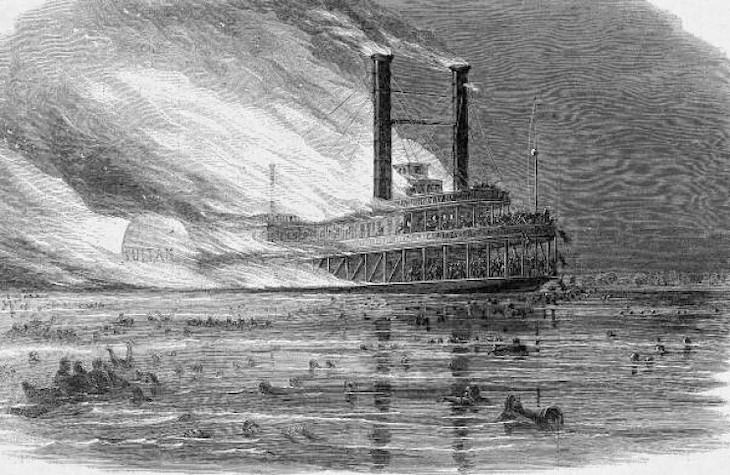
Image Source: Flickr
On April 27th, 1865, just days after the end of the Civil War, the Sultana steamboat burst into flames along the Mississippi River, killing an estimated 1,800 passengers and crew. The 260-foot-long wooden boat was built in Cincinnati in 1863 and was regularly used to transport passengers and freight between St. Louis and New Orleans.
Although the Sultana was designed to hold 376 people, on the day of the disaster there were more than 2,000 Union troops on board. The severe overcrowding and a river current that was faster than expected put increased pressure on the ship's boilers, which had been newly repaired. Shortly after leaving Memphis, the overstrained boilers exploded, blowing apart the center of the boat and starting the uncontrollable fire. The Sultana incident is the deadliest maritime disaster in US history.
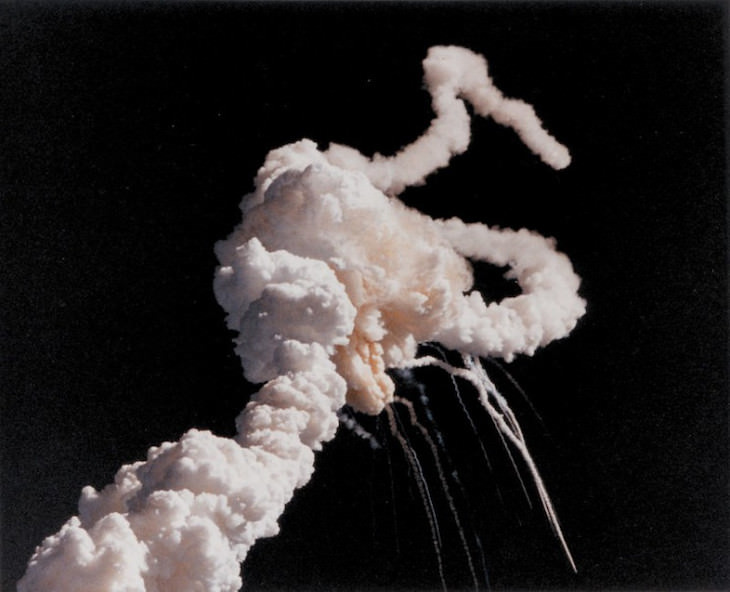
Image Source: Flickr
On January 28, 1986, the world was heartbroken, when the NASA space shuttle Challenger broke apart precisely 73 seconds after liftoff, at an altitude of 46,000 feet (14,000 meters). The disaster killed all 7 astronauts who were on board. The entire event was shown on live television.
Initially, NASA officials described the incident as an explosion. However, the investigation later revealed that a seal in the shuttle’s right solid-fuel rocket booster, designed to prevent leaks from the fuel tank during liftoff, was weakened in the frigid temperatures and failed. Hot gas began pouring through the leak until the fuel tank itself collapsed and tore apart. This resulted in a flood of liquid oxygen and hydrogen that created the huge fireball.
Related: The 12 Moonwalkers: The Men Who Touched The Lunar Surface
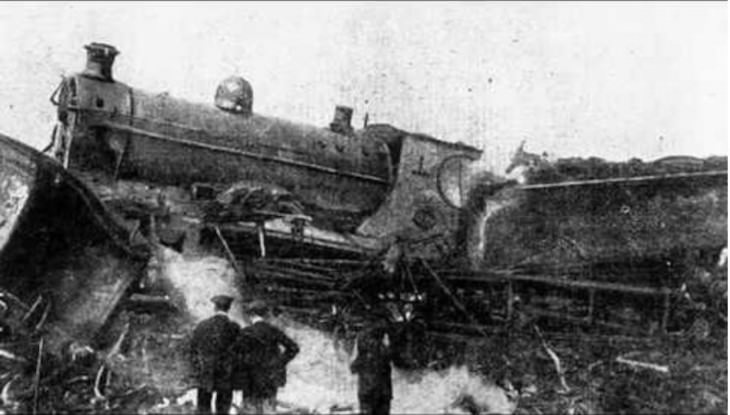
Image Source: YouTube
On May 15, 1915, Britain saw one of the worst rail disasters in its history. Five separate trains were involved in a devastating crash at the Quintinshill signal box near Gretna Green in Dumfriesshire, Scotland. The first collision occurred when a southbound troop train traveling from Larbert to Liverpool collided with a stationary local train. Just over a minute later, an express train traveling north crashed into the wreckage of the first crash. Gas from the lighting system used on the old wooden carriages of the troop train ignited, starting a fire that soon engulfed all five trains.
The disaster claimed the lives of more than 226 people, but a definitive list was never established. In addition, hundreds were injured. After an investigation, it was found that the reason behind the disaster was human error. The two signalmen controlling the line were both sent to prison.
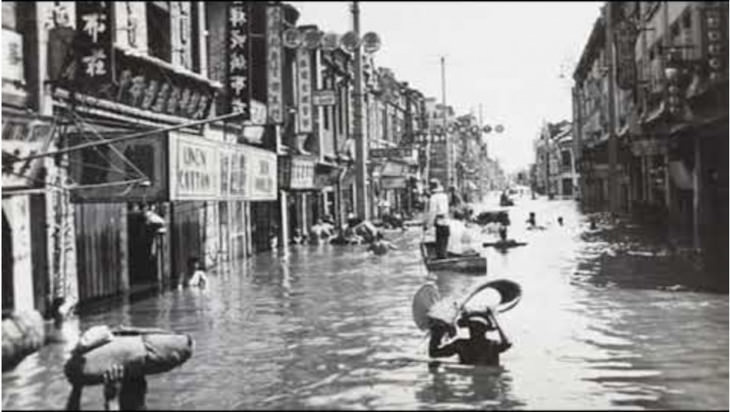
Image Source: YouTube
This massive dam failure is largely forgotten today, however, the collapse of the Banqiao Dam in China is likely the deadliest structural failure in history.
In August 1975, a typhoon led to the collapse of what was then known as the “iron dam”, sending a wall of water nearly 20 feet high (6 m) and more than seven miles wide through the villages below. This then set off a domino effect, when a series of 62 smaller dams downstream collapsed, too. More than 26,000 people drowned in the ensuing flood.
Over the following days and weeks, many of those who had survived the flood were left stranded without shelter, food, or clean water. In total, the death toll was between 171,000 and 230,000. Before the disaster, the Banqiao Dam was thought of as an unbreakable engineering wonder.
The investigation, however, revealed that the reasons for the collapse were largely due to poor design, which left too few sluices for drainage, as well as poor maintenance, unsafe construction, and the overuse of dams in that region. A lot of the blame also fell on the government for its failure to mount an effective disaster response.
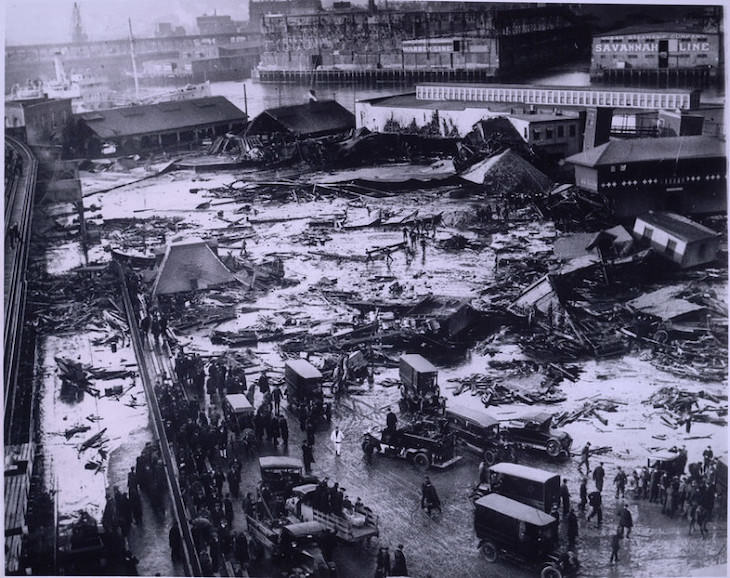
Image Source: Flickr
Around noon on January 15, 1919, a giant tank of molasses burst open in Boston’s North End, flooding the streets with more than two million gallons of sticky liquid which traveled at speeds of up to 35 miles per hour (56 km/h). What may sound like a scenario from a cartoon was actually a devastating disaster in real life. The molasses flood crushed buildings and trapped horses, and ultimately killed 21 people and injured 150 more. The smell of molasses lingered for decades.
The accident was initially pinned on fermentation in the storage tank causing an explosion, but more recent analysis suggests the structure of the tank was flawed and its walls were too thin to hold the weight of the molasses.
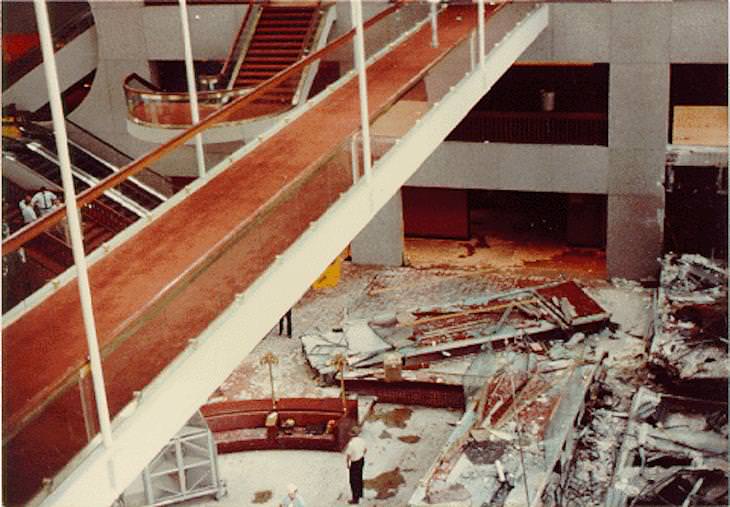
Image Source: Wikimedia Commons
On July 17th, 1981, 114 people were killed and another 200 or so injured when two vertical walkways, on the second and fourth floors, collapsed and crashed onto a dance being held in the lobby of the Hyatt Regency Hotel in Kansas City.
Investigators found that the collapse was the result of flaws in the design of the steel hanger rods used to support and connect the two walkways, which meant they were unable to support the load placed on them.
If you found this article interesting, share it with family and friends